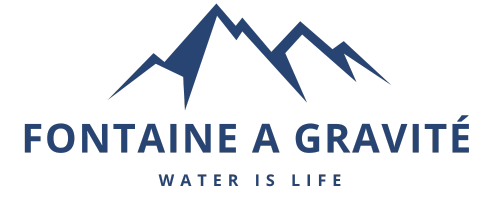Understanding NSF Certifications in Water Filtration
Share
Understanding NSF Certifications in Water Filtration
When choosing a water filter, you often see mentions like NSF 42, 53, 372, 401 Or P231. These codes define what your filter is actually capable of eliminating. Here is a clear and complete guide.
NSF/ANSI 42: Taste, Odor and Appearance
- Aim : improve consumer comfort.
- Guarantees: reduction of free chlorine, improvement of taste and odor, reduction of turbidity.
- For you : water that is more pleasant to drink. Basic certification focused on sensory comfort.
NSF/ANSI 372: Lead-Free Guarantee
- Aim : secure the materials.
- Guarantees: lead content <= 0.25% in all parts in contact with water.
- For you : no metal contamination by lead.
NSF/ANSI 401: Emerging Contaminants
- Aim : respond to modern pollutants found in drinking water.
- Guarantees: reduction of 15 specific contaminants : drugs, hormones, industrial chemicals, pesticides and herbicides.
- For you : protection against current chemical residues.
NSF/ANSI 53: Contaminants impacting health
- Aim : target pollutants dangerous to health.
- Scope : 50+ possible contaminants, each manufacturer chooses those it has certified.
- Examples: heavy metals (lead, arsenic, mercury, cadmium, chromium), nitrates/nitrites, pesticides, solvents, disinfection by-products (THM, HAA5), asbestos, cysts.
- For you : real health protection, well beyond simple comfort.
NSF P231: Bacteria, parasites and viruses
- Aim : ensure microbiological drinking water.
- Requirements: bacteria ≥ 99.9999%, parasites ≥ 99.95%, viruses ≥ 99.99%.
- For you : water made drinkable even from a contaminated natural source.
Beyond NSF certifications
It is important to understand that NSF certifications define a minimum contaminants tested, chosen by the brand. For example, for the standard NSF 53, the threshold for obtaining is approximately 50 pollutants tested. But some manufacturers go much further:
- Berkey®: more than 200 contaminants analyzed by certified laboratories in the United States. This places their results well beyond NSF standards, which explains why the brand does not communicate on a single, limited NSF certification.
- Coldstream FTO+: also recognized for exceeding the minimum requirements, with more than 200 contaminants tested, including many heavy metals, chemicals, PFAS, bacteria and viruses.
These additional analyzes provide independent proof that the actual performance of the filters exceeds the minimum certification requirements.
Simple Summary
- NSF 42: taste, smell, chlorine.
- NSF 372: lead-free guarantee.
- NSF 401: 15 emerging contaminants.
- NSF 53: 50+ pollutants impacting health (list chosen by the manufacturer).
- NSF P231: complete microbiological protection.
- Berkey & Coldstream: +200 contaminants tested, analyzes beyond minimum certifications.
For whom?
Individuals
A reliable benchmark to know what your filter really eliminates.
Professionals
A guarantee of transparency and differentiation, reinforcing credibility in the face of competition.
To remember
The more NSF certifications a filter has, the broader the coverage. But some manufacturers like Berkey® Or Coldstream go even further by testing 200+ contaminants, thus far exceeding the minimum requirements.
